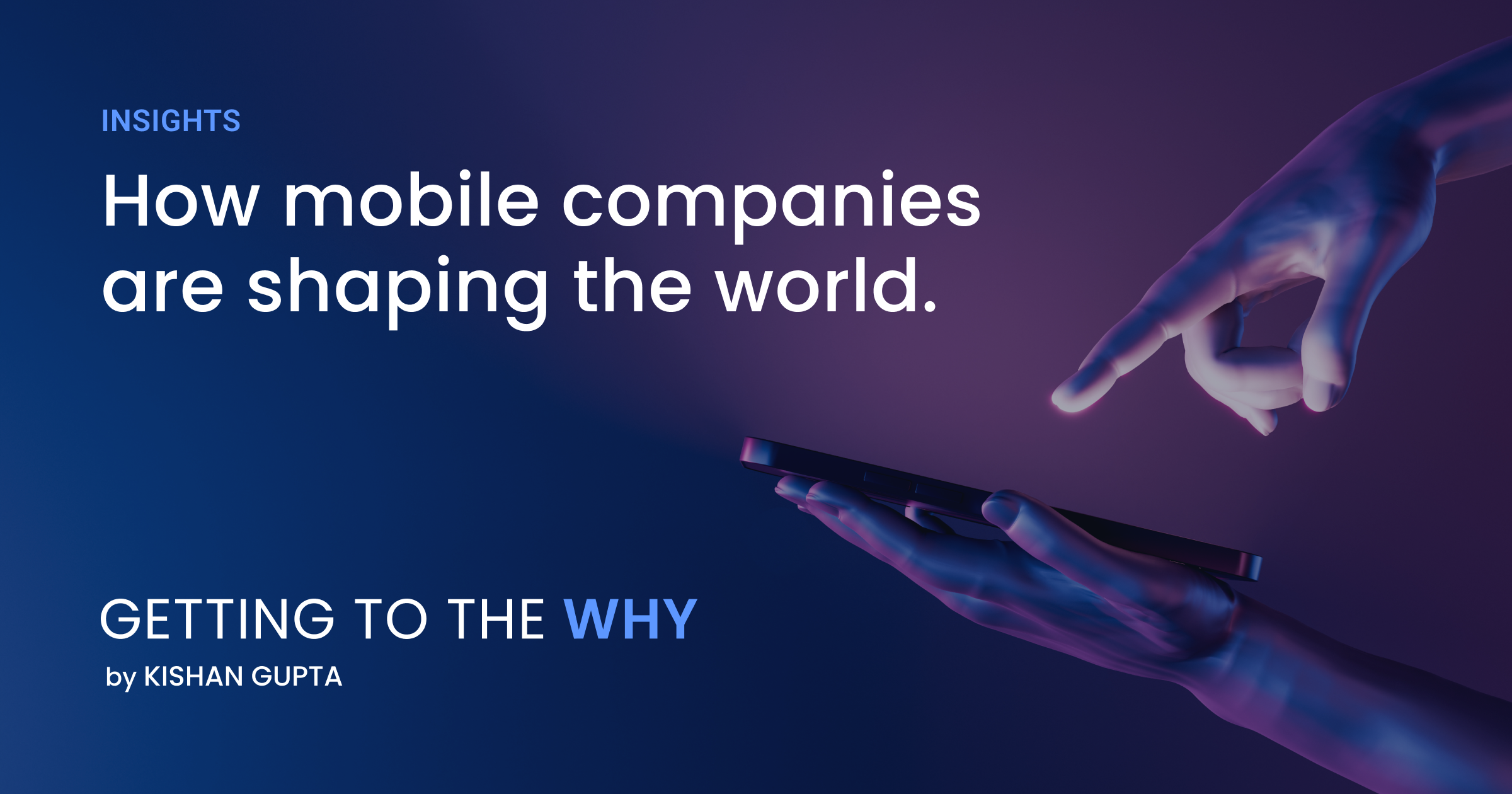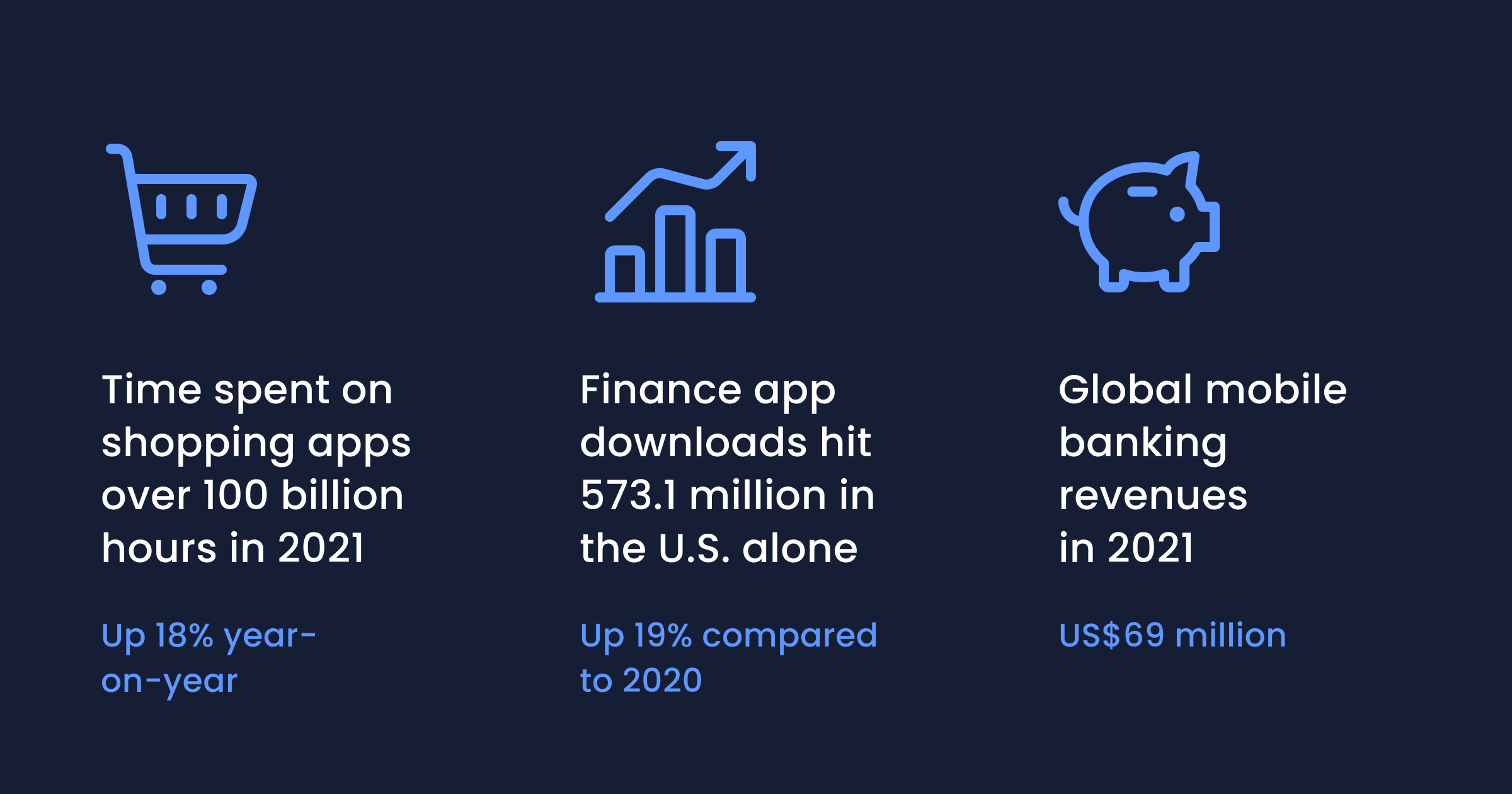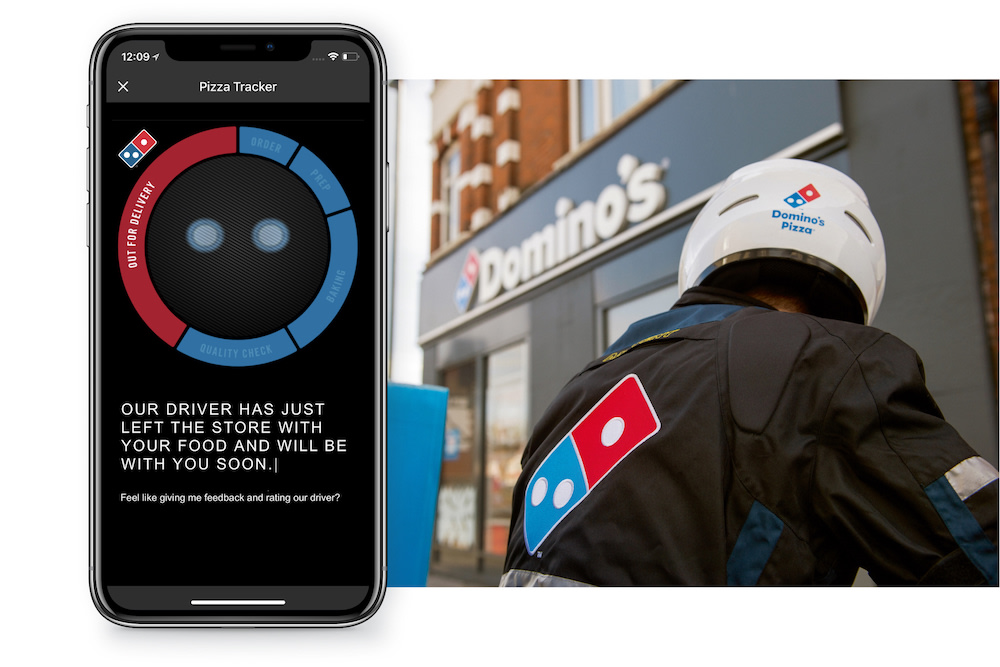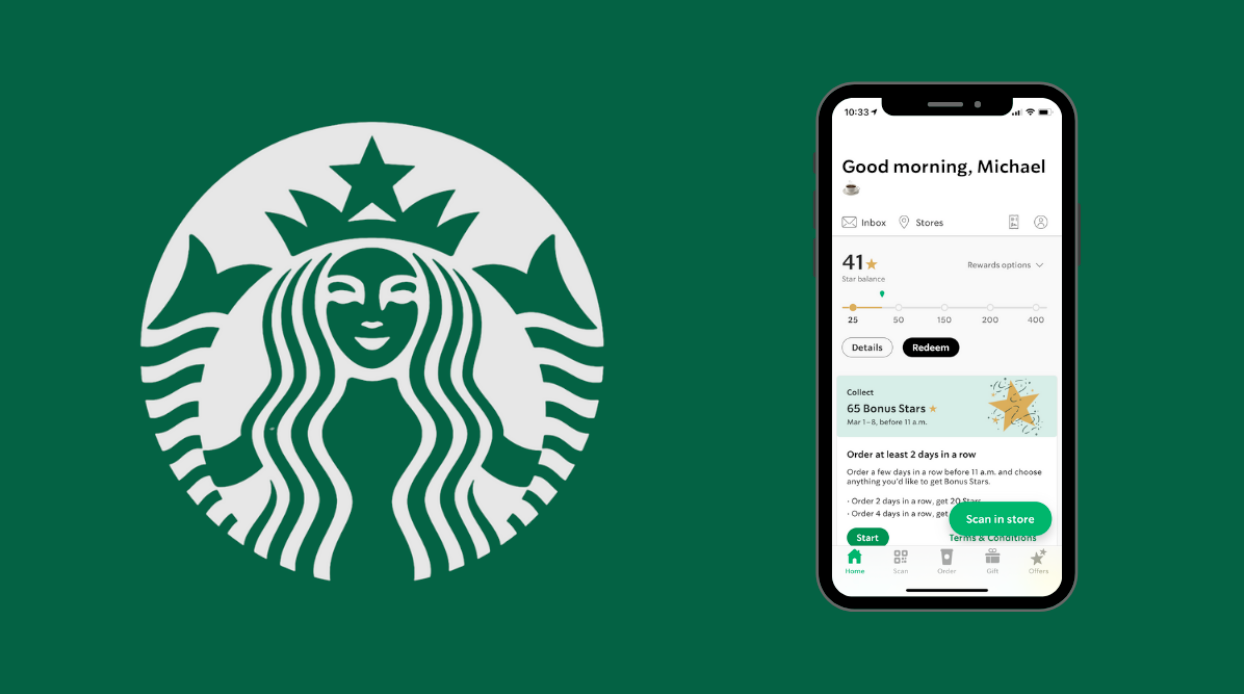Getting to the why: How mobile companies are shaping the world
PUBLISHED
24 August, 2022

Co-Founder of UXCam

Whether you’re hungry, need a ride — or trying to figure out who starred in that movie? — the knee-jerk reaction is to reach for your smartphone. That is, if you’re one of the six billion smartphone users in the world today. With a third of our waking hours spent glued to our phones, the mobile app experience is fast becoming the first touchpoint for people when they have a pain point in daily life.
This figure has given rise to a new breed of companies that operate only on mobile such as Robinhood, Coinbase, Bolt, Revolut, Calm, Deliveroo, Cashapp, and the list goes on.
What does this mean for digital businesses? In 2022, a seamless app experience is something that users expect, not something they’re delighted by.
A mobile-first product understands user interactions and mobile-specific gestures. It starts with someone on the move who wants to complete their task in as few steps as possible. Users want an uncomplicated onboarding, handsfree login, secure and fast transactions, easy navigation, and seamless connection to the offline experience. Success in these areas gets users to open the same app over and over again.
The sharp uptick in mobile usage is seen in consumer verticals across the board.

Time spent on shopping apps reached over 100 billion hours in 2021, up 18% year-on-year. Finance app downloads hit 573.1 million in the U.S. alone, a 19% jump compared to 2020. Not to mention, the global mobile banking revenues in 2021 were$69 billion.
Channels for delivering a mobile-first experience
For traditional, non-mobile-first businesses, the bottleneck of a seamless experience is rooted in the struggle to digitally transform. Typically, businesses are built for the web or offline experience, and over time — as they increased in mobile users — decided to serve a mobile version of their product or service.
More users moving to mobile is a good reason to start building a mobile-first experience for your product. But do you adapt from the web or start from scratch? Do you have the tools to understand your mobile users? There are three primary channels to deliver a mobile experience:
A mobile-friendly web app experience. Web apps are great for reaching a broader audience that has a large desktop presence. They’re often used to drive traffic to the app store to download a native or hybrid app. A web app is written in a web language like HTML, CSS, and Javascript, and is restricted to mobile browser capabilities. Developers can make web apps responsive to phones or tablets, and make navigation more comfortable for mobile users, but they have limited access to a phone’s operating system, like GPS or camera. It’s far from a mobile-first experience, it’s a web-first one.
A hybrid mobile app experience. Hybrid apps are generally faster and more affordable to develop than a native app and have more functionality than a web app. They’ve got the look and feel of a native app, but they’re built using web tech like JavaScript, CSS and HTML. The code is wrapped within a native application using open-source frameworks like Ionic or React Native. With plugins, you overcome many issues that come with web-only app development, like user device login with Touch ID or access to bluetooth. The major drawback is that the UI doesn’t really look and feel like its native counterpart and the performance isn’t as high as an app fully built on a native platform. But you’d be surprised to know that 74% of the top 50 iOS retail apps in the US are hybrid.
A native mobile app experience. Native offers the most superior user experience since the app is written using the native dev language and tools for that platform (e.g. iOS app written in Swift or Objective C, and Android developed with Kotlin or Java). Native apps perform better and faster since you have access to the operating system’s user UI controls and layouts. It’s increasingly complex for non-native apps to compete with the functionality of native apps through a multi-platform approach.
Mobile as a revenue-generating channel
From higher transactions on fintech apps to more purchases on e-commerce retail apps, a clear mobile strategy can be an unexpected revenue driver and reduce costs.
For brands that have grasped the mobile opportunity, apps aren’t just extensions of their business, they are the business.
Dominos Pizza

Dominos Pizza, for example, went from being famous for its stuffed crust, to becoming a digital powerhouse earning over $550 million per year in mobile sales alone with 44 million users and a 4.8 rating on the app store.
“Customers who shop online have a higher rate of conversion, buy from us more frequently, spend more per visit, hold the brand in high regard, and are less costly for our franchisees to serve.” David Wild, CEO – Domino’s Pizza
Anyone can make a good pizza, but Domino's technology strategy and successful digital transformation focused on what customers value besides a variety of toppings: convenience in ordering and speed of delivery. The app’s Pizza Tracker feature, for example, tracks the steps from order, prep, and baking, to its delivery status. This creates a sense of confidence and security because customers know exactly when their pizza will be delivered.
By putting themselves in front of customers on the device they use on a daily basis, Dominos strengthened its brand awareness and earned them a loyal fanbase.

Starbucks
The mobile opportunity is ubiquitous. Starbucks boasts 31.2 million mobile payment users, that’s only second to Apple Pay’s 43.9 million mobile payment users. The Starbucks Mobile Order & Pay app accounts for 20% of Starbucks’ revenue in the United States. According to a rep from the company, “digitally engaged customers purchase 2 to 3 times as many products as those that are not digitally engaged."

The Starbucks app offers an incredibly satisfying experience for several key reasons:
Saves time and reduces user journey friction
Customers can order and pay ahead of arrival at Starbucks locations.
Based on previous purchases, the app recommends similar products.
The app can also act as a payment method at the counter, removing the barrier of having to use your own payment methods like cash and credit cards.
An addictive loyalty program
Starbucks rewards status lives on the homepage, so every time you open the app, you know what you need to do to get one step closer to your goal of a free drink.
The progress bar and reward “stars” visually pull you closer to your goal, accelerating the time to purchase.
The time limit on rewards encourages users to purchase more frequently.
An online experience that enhances the offline one
Everything you can do in the store, you can do in the app, e.g. sending and using digital gift cards, discovering songs played in stores and adding tips for in-app purchases.
Pick-up-only locations encourage users to make more transactions via the app.
The UI of the menu is organized to reduce cognitive load. By categorizing drinks by coffees, teas, cold coffees, and so on, you don’t get that overwhelming experience of having to pick 1 of 30 written items on display as a barista stares you down.
Like Dominos, Starbucks wasn’t just thinking about how to make a good coffee, they thought how can we make this person’s day easier? The user likely is on the go, on the way to work, has several kids in tow, or is late for class — these considerations put the user front and center. By solving the pain points that coffee lovers have in their day-to-day lives, Starbucks built an app people couldn’t afford not to download.
Grasp the mobile opportunity
The lesson here is that the mobile opportunity is the user-focused opportunity. The companies that struggle for relevance are the ones trying to adapt to the mobile experience from the web. The ones who come out on top are reframing their experiences starting with the device that’s in most people’s hands at any given moment of the day.
Traditional industries are ripe for disrupting and winning with a mobile-first strategy. Starbucks and Dominos went from food chains to becoming category leaders by focusing on the needs of customers. Putting users, not just mobile, at the center of your digital transformation is the key to a successful app experience.
The winning strategy involves deeply understanding the user behavior and building experiences around it. Former Starbucks CEO Howard Schultz illustrates this best when talking about the Starbucks Mobile Order & Pay app.
“Mobile Order & Pay is fueling both revenue and profit growth in every market in which it has been deployed with customer adoption starting faster and accelerating with each new phase we roll out. By enabling our customers to order ahead and avoid waiting in line, Mobile Order & Pay is enabling us to capture more on-the-go customer occasions, and the data is clear."
In your opinion, which other companies have nailed digital transformation into a mobile-first experience? Which app companies are putting users first?
AUTHOR

Kishan Gupta
Co-Founder of UXCam
Co-Founder, UXCam
What’s UXCam?
Related articles
Product best practices
Como Encontrar Usuários Ativos De Um Aplicativo
Descubra estratégias comprovadas para identificar e engajar usuários ativos do seu app, aumentar a retenção, impulsionar o crescimento e maximizar o sucesso do seu...

Tope Longe
Growth Marketing Manager
Product best practices
Product Performance Analysis - A 7-Step Playbook with UXCam
Learn how to use product performance analysis to improve UX, boost retention, and drive growth with actionable steps and...

Tope Longe
Growth Marketing Manager
Product best practices
How to Increase Mobile App Engagement (10 Key Strategies)
Discover the top strategies for increasing mobile app engagement and user retention. From push notifications to app gamification, our expert tips will help you boost...

Tope Longe
Growth Marketing Manager